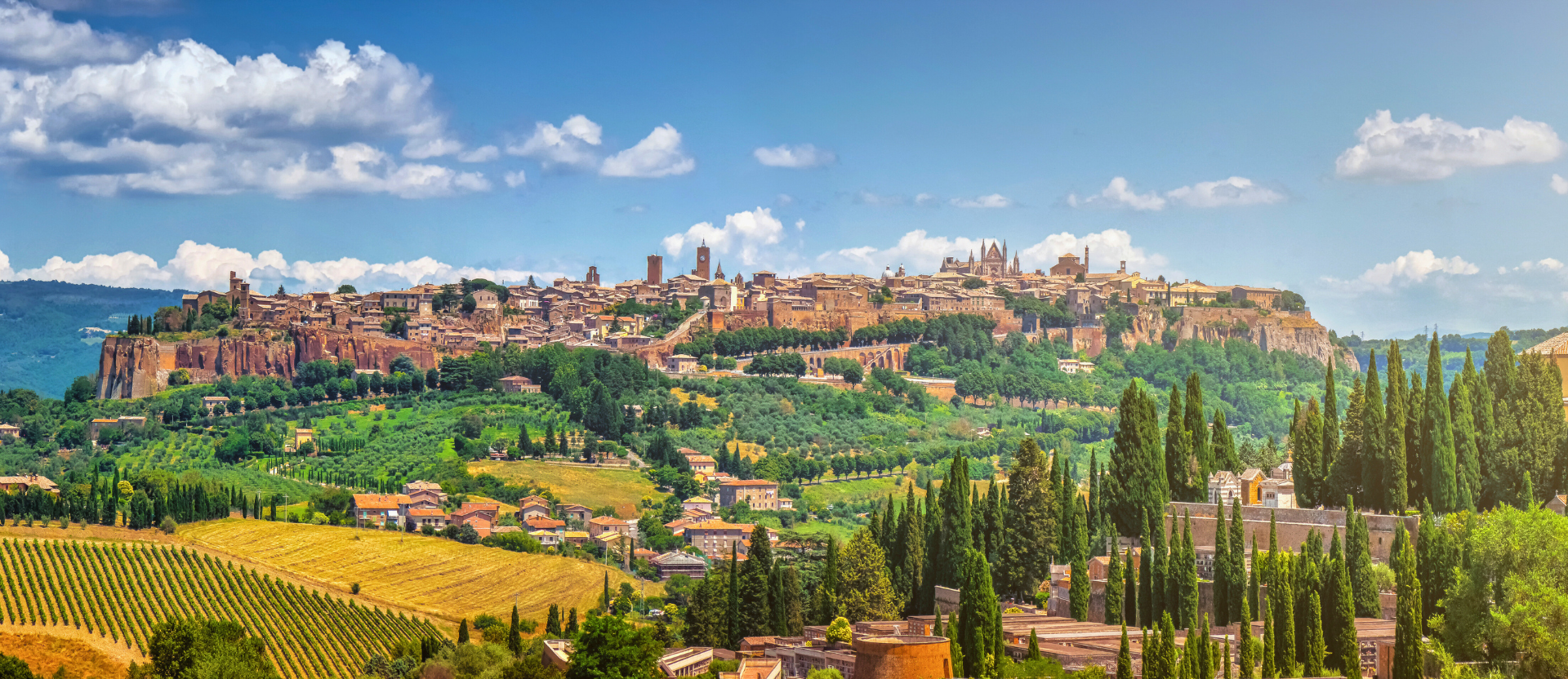
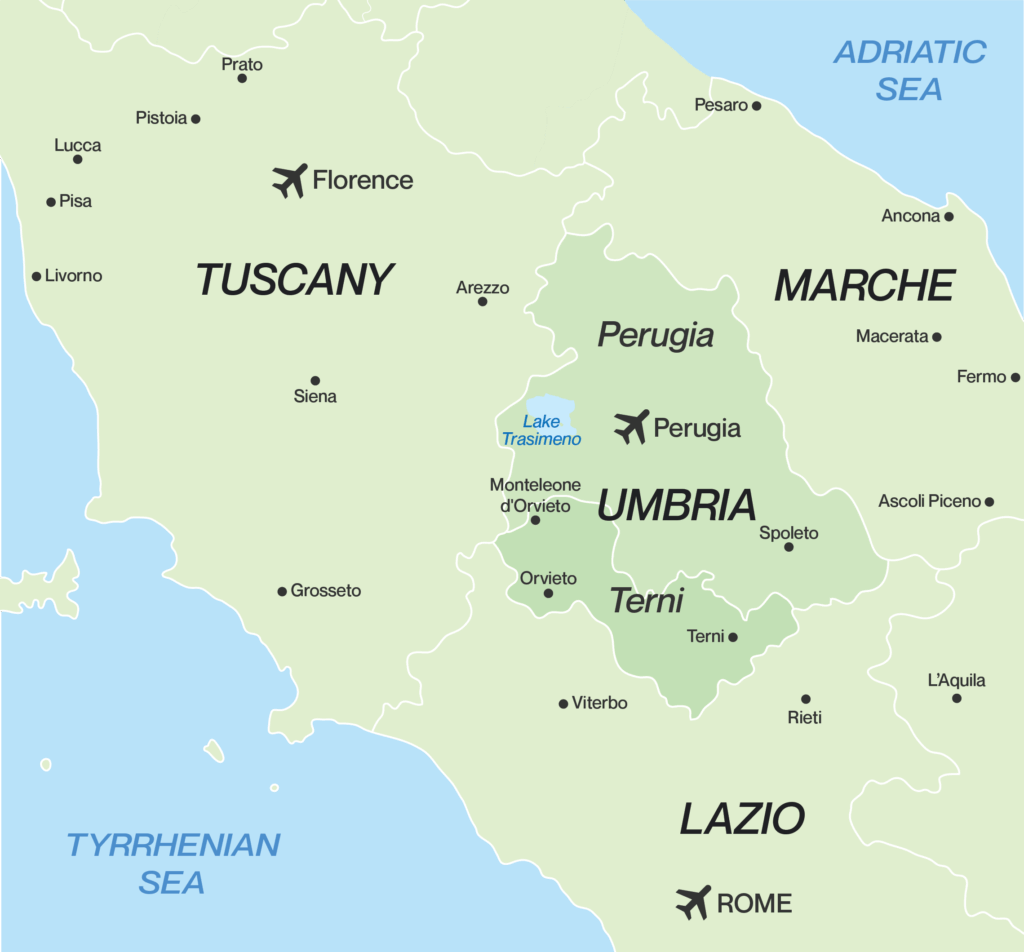
Looking at a map of Italy and placing a pin pretty much in the center is where you’ll find the region of Umbria, which is divided into two provinces: Perugia and Terni. Perugia is also the capital city and home to the main international airport, offering easy access to the area. Terni is renowned for its natural landscapes and Marmore Waterfalls. Umbria stretches from the Apennine Mountains in the north to towns like Città di Castello, near the borders of Tuscany and Marche, and southward to the town of Terni and on to Lazio. Bordered entirely by Tuscany, Lazio, and Marche, don’t expect seaside resorts (although the coast is under two hours away), but rather prepare to be impressed by lakes, waterfalls, and magnificent hilltop towns, including Todi, Gubbio, and wine-famous Montefalco.
Lake Trasimeno, the largest lake in central Italy and the fourth largest in Italy, lies halfway between Florence and Rome. Slightly smaller than Lake Como and dotted with lakeside towns like Castiglione del Lago and Passignano sul Trasimeno, you can walk, cycle, or drive around the lake, getting lost in the pretty backstreets of atmospheric villages or simply stop and take in the breathtaking scenery.
Whether you’re an avid historian, love exploring on foot or by bike, or are a foodie eager to sample the local fare, there are so many things to do in Umbria. Explore the enchanting medieval city of Assisi, the birthplace of Italy’s most famous patron saint, St. Francis of Assisi. Visit the old Roman village of Stifone, with its natural springs and crystal turquoise waters. Hard to imagine that it was once a bustling Roman port and shipyard. Add nearby Narni to your list, famous for inspiring the fictional Narnia in the series of C.S. Lewis books.
For a different perspective on a city, visit Orvieto and the famed Duomo, and then take a tour underground below the city through its labyrinth of 400 ㎡ of caves and tunnels, exiting the other side of the city walls. Umbria is more laid-back than its neighbor, Tuscany, with its hilltop-walled towns and cities attracting fewer crowds, giving you a real feel of the heart of Italian living.
Monteleone d’Orvieto is a true example of one such town. Located close to the border of Umbria and Tuscany and at an elevation of over 500 meters, this walled medieval hamlet is a true gem and one of Italy’s officially recognized most beautiful villages, ”I Borghi più belli d’Italia.” Monteleone d’Ovieto sits high on a hill with fabulous panoramic views over the Val di Chiana and distant mountains. The beautiful architecture of warm red bricks dazzles in the golden hour light, and the cobbled streets and intricate arches meander past historical touchpoints that have been around since Etruscan times. Be sure to visit Teatro Dei Rustici, the oldest of the four smallest theaters in the world!
Spello is enchanting at any time of the year, but if you visit in June, you can witness flower-carpeted streets celebrating the Infiorata festival. Another magical setting is Fonti del Clitunno—a tranquil lake teeming with wildlife, bordered by cypress and willow trees. Its crystal clear waters change from the bluest hues to emerald green, with a serenity capturing the attention of many a poet, including Byron. Outdoor activities await at Nera Gorge, including hiking and cycling trails, white-water rafting, and canoeing along the Nera River. The Marmore Falls stands as the highest artificial waterfall in Europe at 165 meters and is quite a spectacular sight.
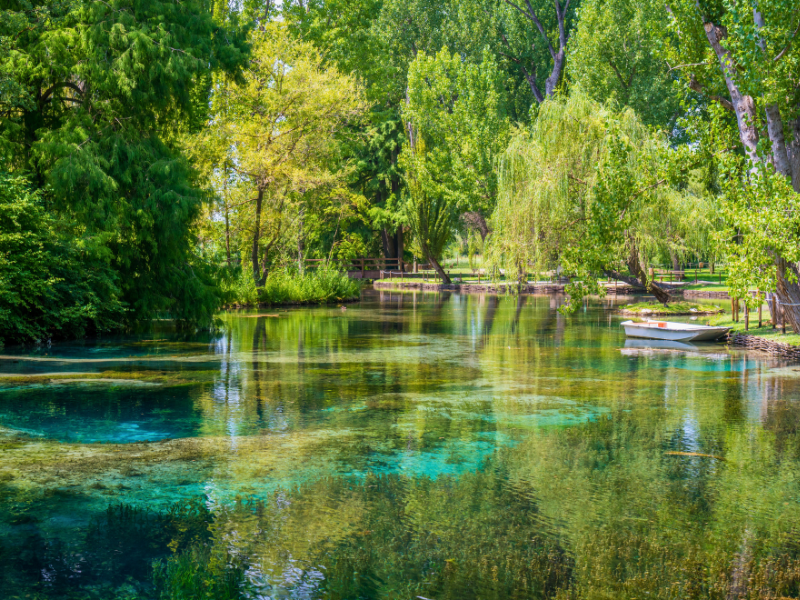
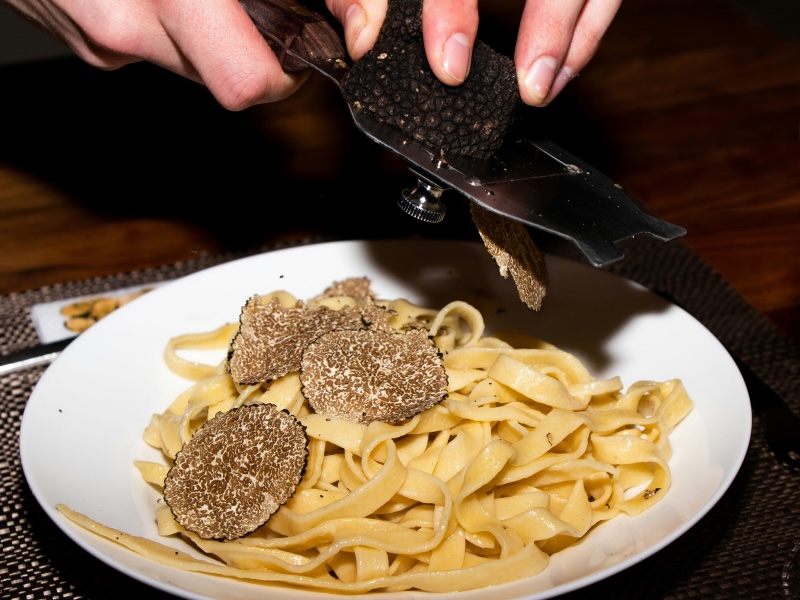
Every region in Italy has its culinary specialties, and Umbria is no exception, with perhaps the most mentioned black truffles whose deliciously woody, nutty flavor elevates and decadently tops the local strangozzi pasta dishes, and blends harmoniously in the local pecorino cheese.
Savor the Umbrian specialty of slow-roasted porchetta stuffed with herbs, typically served as a main dish or sliced and served inside the region’s unleavened torta al testo bread. Wild boar ragu, spicy pork sausage, lentils, and wild chicory offer hearty and flavorful menu choices, complemented by award-winning Umbrian wines, with Orvieto and Trebbiano whites and Montefalco reds among the most noteworthy.
Chocoholics can’t leave Umbria without visiting Perugia, the home of the hazelnut-covered chocolate Baci (kiss), produced in the Perugina chocolate factory, and of course, the annual Eurochocolate festival!
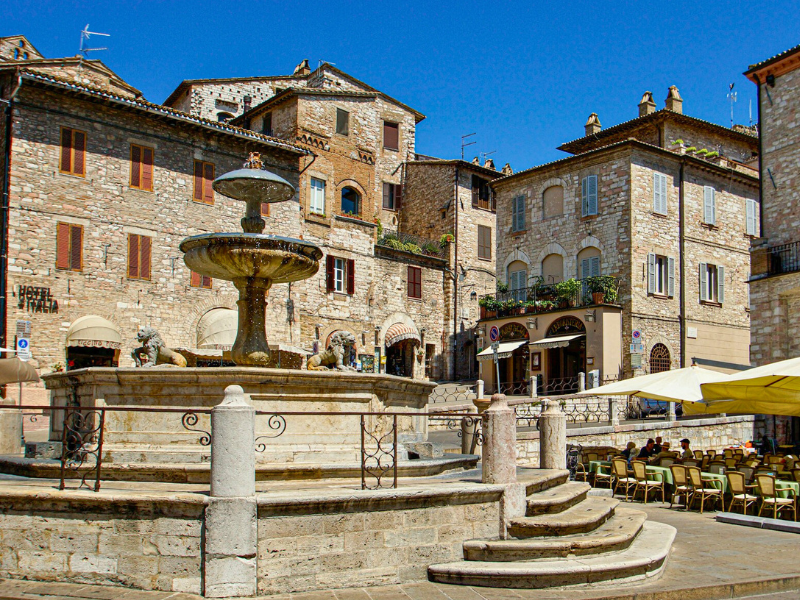
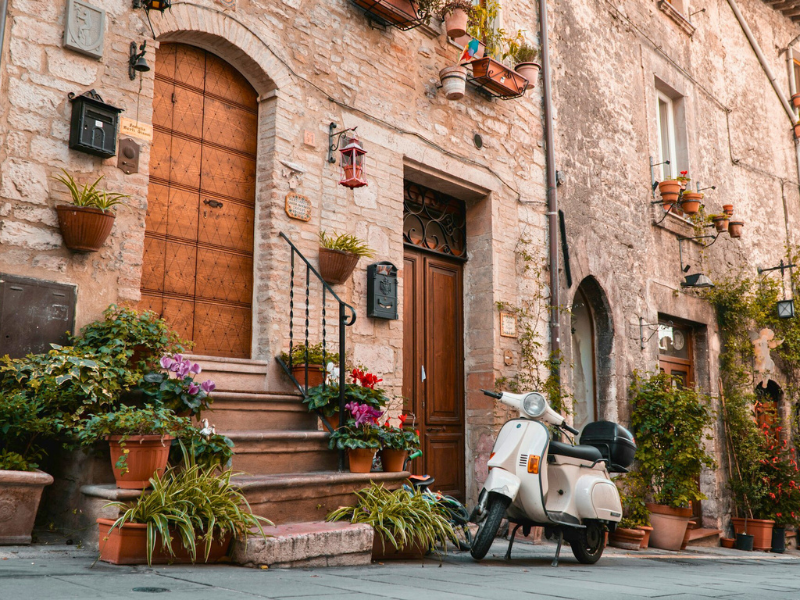
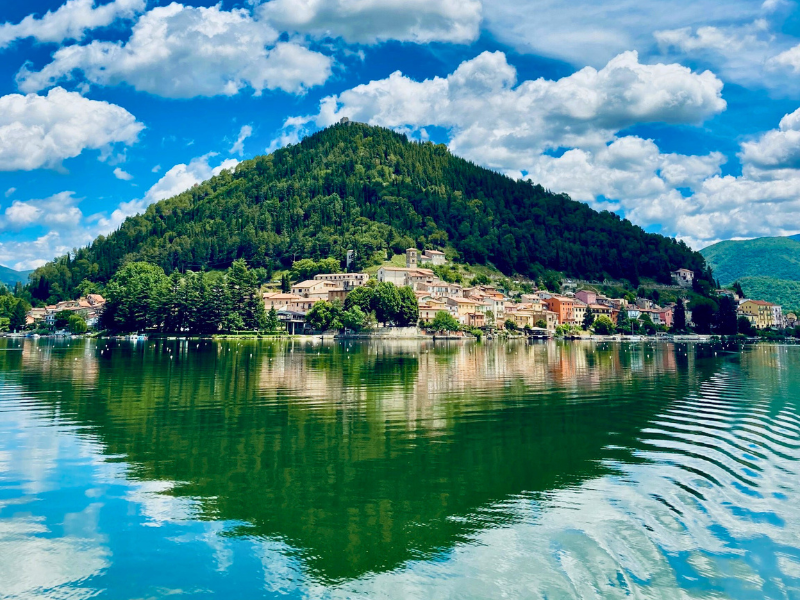
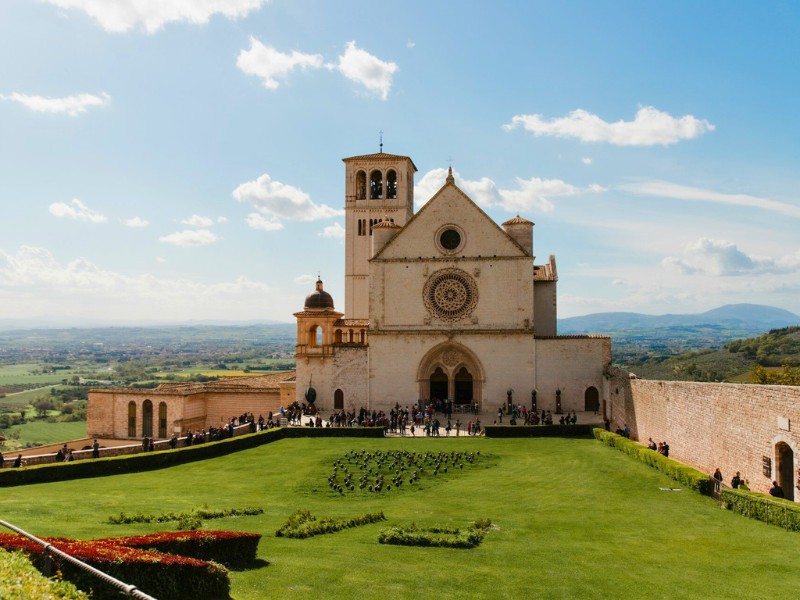
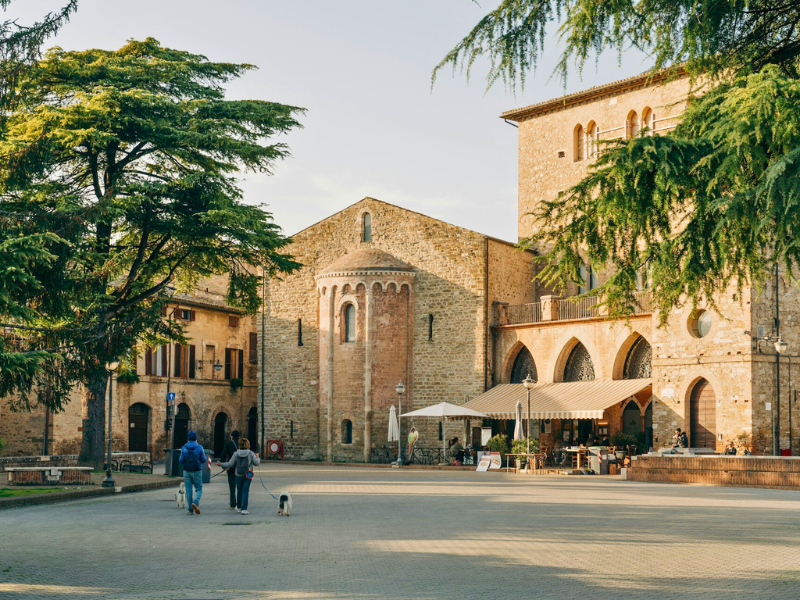
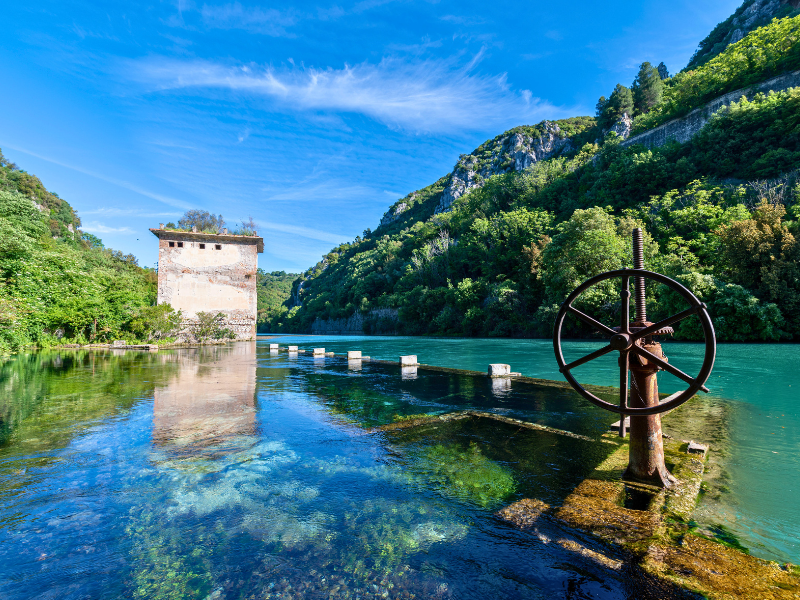
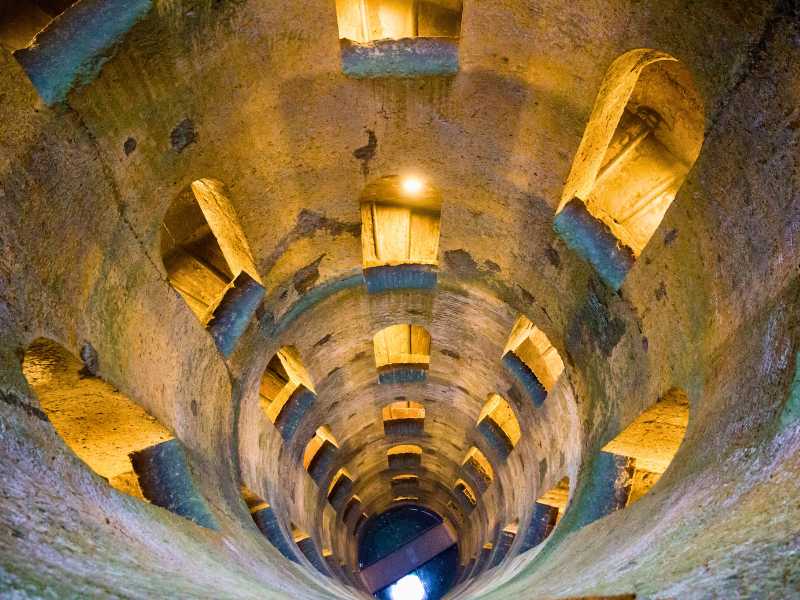
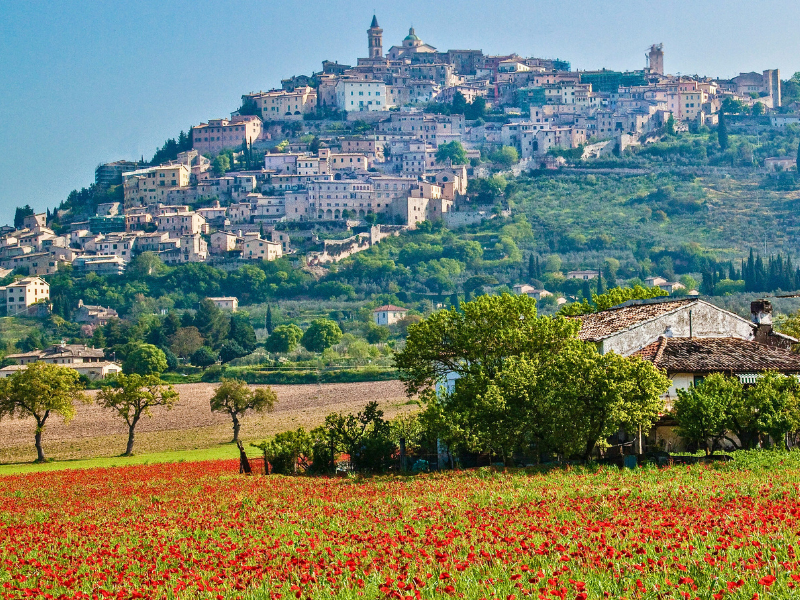
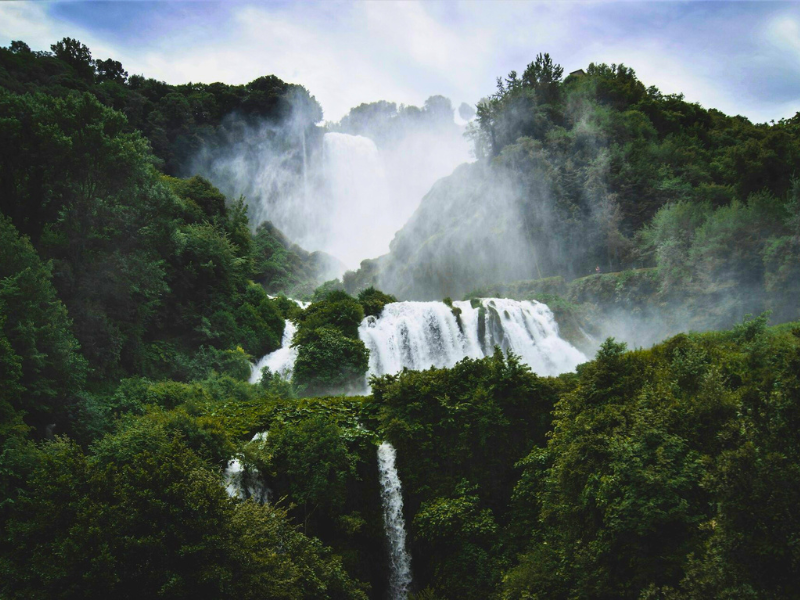
We meticulously select only the most exceptional fractional ownership properties for sale, ensuring unparalleled quality in idyllic locations. Secure your spot on the Waitlist today to be first in line for our next premier location, which will be arriving very soon.
Download a property brochure